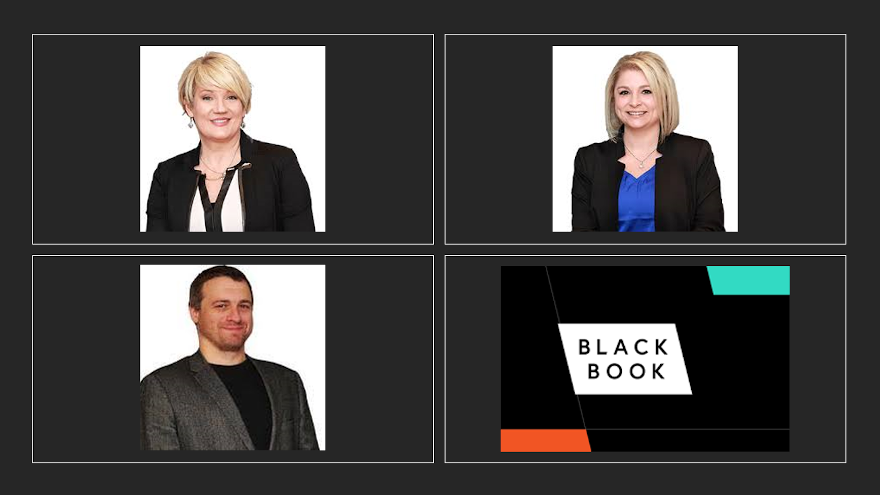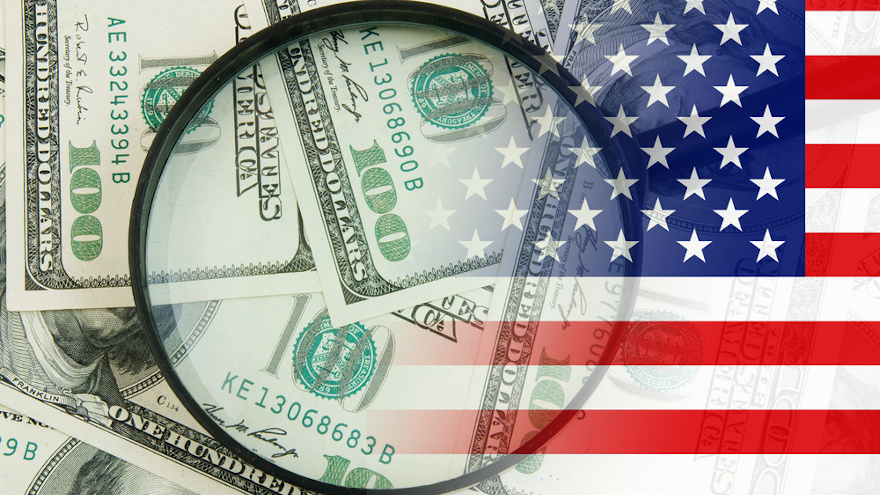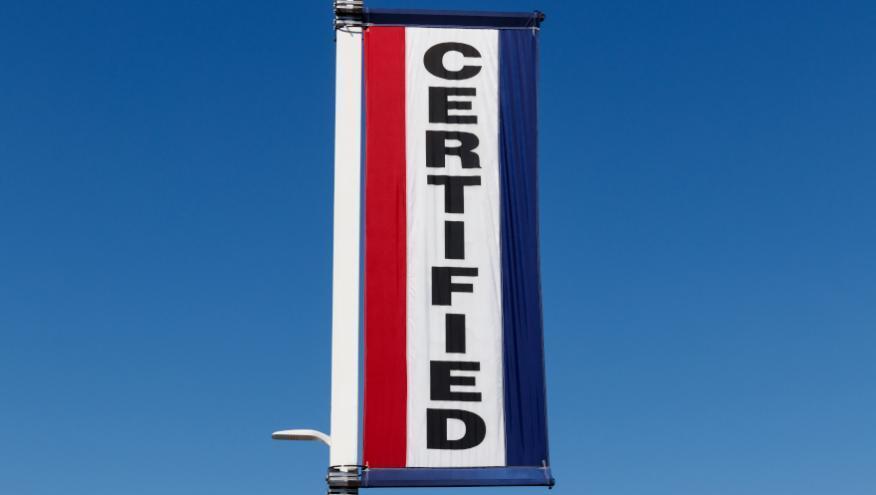COVID-19 is crushing a wide array of small businesses as stay-at-home orders forced closures. Some owners are even taking the drastic action to wind down the operation for good.
However, the latest information from Urban Science shows how resilient franchised dealerships have been during the pandemic as the firm released statistics and insights on Thursday from its Mid-Year 2020 Automotive Franchise Activity Report (FAR).
As of the beginning of July, Urban Science said there are 34 fewer dealerships (rooftops) in the United States, taking the count of 18,195 down to 18,161. Analysts explained this 0.2% decrease is small and still indicates continued stability overall.
Urban Science also indicated the number of franchises — or brands a dealership sells — also experienced a period of stability, slightly decreasing from 32,185 to 32,031 since the beginning of the year.
“Since 2010, the dealership network has set a new normal pattern of stability,” Urban Science global director of data Mitch Phillips said in a news release. “The data shows that 98% of local markets had virtually no net change (+/- 1 dealership).
“That said, the most significant (net) dealership decreases occurred in California and New York at seven dealerships each, and Iowa at five dealerships. Increase in net dealership count was low, but the most significant increases occurred in Florida with seven dealerships and Illinois and Washington with three dealerships each,” Phillips continued.
“An interesting observation is that Texas is now missing from the most active states because, typically, they are on that list for adding the most dealerships,” he went on to say.
Phillips wrapped up Urban Science’s latest update by mentioning another key industry metric — sales throughput for dealers — which the firm defines as the number of sales divided by the dealer count.
“With this current stable dealer count, the throughput statistic is controlled by the sales volume which is currently forecasted to decline in 2020 by around 20%,” Phillips said. “Sales throughput should fall 206 units to 734 per store based on 2020 sales forecasts.”
Urban Science pointed out a recent Harris Poll COVID-19 tracker, however, showed that pent up demand for buying a vehicle once things return to normal and businesses reopen has increased since the end of March (11%) compared to the end of May (19%).
Understandably, dealerships and finance companies are currently at the point of the month when they’re likely focused on sustaining sales momentum generated during the first half of the sales period or looking to rebound before the calendar turns the page.
However, two surveys originating from the real-estate world might provide some optimism about the longer-term prospects for vehicle deliveries and contract originations. The separate projects showed notable consumer sentiment about moving out of cities and into suburbs or even more remote locations where owning at least one vehicle would be quite beneficial, if not significantly necessary.
Quicken, makers of personal finance software, on Wednesday shared results from a recent survey of more than 1,000 millennials renting apartments in urban areas. While 93% of millennials have stayed in their city of residence since the start of the pandemic, more than one-third (37%) are considering moving away in the next year.
And the COVID-19 pandemic is influencing the U.S. housing market both in terms of where people are searching and what they are searching for, according to realtor.com’s quarterly Cross Market Demand Report, which measures search data to provide insight into where shoppers are looking for their next home.
After an initial shift in search habits at the onset of the coronavirus pandemic in the U.S., realtor.com indicated home shoppers looking outside their current metro area for homes have surpassed pre-COVID levels, and more are increasingly setting their sights on the suburbs. During the second quarter, 51% of views from urban residents of the nation’s 100 largest metros went to suburban properties in their metros, an all-time high since realtor.com began tracking metro level search data in 2017.
Quicken reported that responses in its survey indicate that millennials wouldn’t move all at once, but in waves during the next 12 months, suggesting a gradual exodus. Here’s a breakdown of when they’re considering leaving:
— Within six months: 16%
— Between six months and one year: 21%
Quicken discovered fewer than half (47%) of millennials indicated a definitive plan to stay in their cities long term and 16% weren’t sure. Additionally, 34% of millennials are now working remotely, offering more flexibility in where they choose to live.
“Millennials living in cities have been spending a substantial amount of their income on rent — the rule of thumb suggesting one-third of a person’s pre-tax income be spent on housing isn’t always realistic in highly sought-after urban locations,” Quicken vice president of marketing and sales Linda Itskovitz said in a news release. “COVID-19 is expected to have a lasting financial effect on this generation, and we’re starting to see that as millennials reconsider their living situations.”
Meanwhile, realtor.com said its search data analysis reinforces the findings of a recent realtor.com and Harris X consumer survey of 2,000 active home shoppers, which indicated that home purchase decisions are being influenced by consumers’ ability to work remotely, desire for more space and their willingness to commute longer to get what they want in a home.
And to commute, those individuals likely would need a vehicle.
“We see lingering effects of the coronavirus on shopping behavior and preferences. In the Northeast, especially, people are now as likely as before the pandemic to be looking for a home in a market that’s not where they currently live. However, those looking elsewhere are much more likely to be looking in smaller, nearby markets,” realtor.com chief economist Danielle Hale said in a news release distributed this week.
“With remote work more common and accepted, it seems that people are looking to locate further from the office either to enjoy more space at a better price, or get closer to nature in the mountains or at the beach. At this point, they are not venturing too far away,” Hale continued.
Following the recession in 2008, Quicken recapped that suburban growth slowed while droves of millennials just graduating from college moved to big cities where jobs were concentrated. Many considered millennials the urban generation and questioned if they’d ever settle into suburbs.
However, Quicken pointed out the trend started to reverse in 2017 when some cities reported hitting “peak millennial,” and in 2018, census data for city population growth found that suburban growth outpaced city growth for the second straight year.
Now, as the pandemic has changed nearly every aspect of our daily lives, Quicken said millennials are taking a step back to assess what they want from a living space — many seeking out financial security, more space and physical safety.
“Lease terms can play a significant role in decision-making. As we see annual leases expire, millennials will have the opportunity to revisit their financial commitments and determine their next move,” Itskovitz said.
Which might include taking delivery at your dealership and signing a retail installment contract booked through your finance company.
In the initial quarantine period of the COVID-19 pandemic in March and April, the rush to move vehicles off lots caused dealers to shy away from certified pre-owned (CPO) strategies. As a result, CPO sales dropped by 39.5% in the first quarter of 2020. Sales did climb back to finish the first half of the year down only 11.6%.
The reason was straightforward. There was little appetite for investing in rigorous certification processes in the fog of fighting a pandemic. And with shoppers unable to purchase vehicles at physical locations because of state-imposed lockdowns, dealers focused on liquidating assets — often at the expense of margins — in order to preserve capital. In the process, a significant amount of CPO-eligible inventory was released into the regular used-vehicle market.
The picture, however, is rapidly changing. Shoppers are returning to market — physically and virtually — in impressively strong fashion, reflecting the pent-up demand that built during March, April and May.
As a result, CPO is emerging as an effective way to make up for lost ground across an array of critical success factors, including profi tability, brand loyalty and rapid inventory turnover. CPO inventory is an especially compelling proposition as shoppers assess their financial condition and supply of new vehicles remains limited in the wake of factory shutdowns.
Manufacturers are looking for ways to shore up loyalty for their brands. To achieve this, signifi cant investments were made in generous incentive programs to support new-vehicle sales.
The success of these initiatives has been impressive. After a harrowing spring, overall sales of new vehicles in 2020 are expected to be off by only 5.7% from a pre-virus forecast of J.D. Power.
Leveraging incentives to CPO market
OEMs and their dealerships have pivoted to introducing incentive plans for CPO programs that are very similar to those for new vehicles. Here, however, the success of incentives has been mixed. On the plus side:
— One of the big winners this spring and early summer has been Volvo. June CPO sales for this brand have risen by a whopping 51.6% over the same period in 2019.
— Porsche’s CPO program also fared well. June sales in 2020 were up 35.8% from 2019, yielding a 4.7% gain in year-to-date sales.
— On the mass-market side of the equation, strong CPO performance was posted by Ram pick-ups. Sales here were up 51.1% in June, bringing them up 25.7% compared with the same period a year ago.
— CPO offerings from Subaru, a consistent performer through tough times, were up 38.3% in June compared with June 2019, managing a 10.5% year-over-year increase for the first six months of the year.
These strong CPO performances have put these brands among the very few that have been able to post positive sales so far this year. Not a bad trick to pull off through a pandemic.
For other brands, the CPO picture has been thorny rather than rosy. While many mass market brands posted relatively stronger CPO sales in June, they are digging their way out of a deeper trough and are largely in negative territory through the first half of the year.
While there are many contributing variables to the rebounding CPO performance, two factors stand out. Shoppers that are mostly likely to purchase mass market CPOs tend to be more cost conscious, and therefore more interested in used — rather than new — vehicles. Another interesting issue, however, may revolve around the fact that many eligible CPO vehicles were unloaded as regular used vehicles in March and April, and therefore no longer available for CPO treatment today.
Charting a course through recovery
The good news is that the CPO sales are approaching similar levels to those posted by the summer of 2019. Supply is being replenished as eligible vehicles return to market from rental and lease fleets — the two ideal sources for CPO inventory.
Finally, auction markets are once again operating at near-normal capacity. The result is a remarkably resilient CPO market. OEMs and dealers should take advantage of this opportunity to make more investments in CPO incentives to preserve brand loyalty and buttress profit margins.
Ben Bartosch is manager of forecast analytics at J.D. Power. He has spent the past eight years providing expert analysis of the auto industry.
Two wholesale industry leaders shared reasons why others should join them during the 2020 IARA Virtual Summer Roundtable hosted by the International Automotive Remarketing Alliance.
ServNet executive director John Brasher opened first by stating why auctions, consignors and other wholesale-market participants should be online for the event set for Aug. 20.
“With several industry events being canceled this year, we are all eager to get together and share information and catch up. We’ve become comfortable with virtual meetings and video conferencing, so it’s the perfect time for the IARA Virtual Summer Roundtable. Thank you to IARA for putting in the legwork to make this happen,” Brasher said.
Strategic Remarketing Solutions president Jeff Bescher added these perspectives.
“While we do not know where the coming year will lead us, the IARA’s Summer Roundtable’s focus on the future is bringing together the best intelligence in the spectrum of our industry, from remarketers, auctions, lenders and suppliers,” Bescher said.
“The interactive discussions and data-driven reports at this conference can offer us a better feel for what we can expect as an industry moving forward,” he went on to say.
Registration for the event can be completed here. For more information or to learn more about the IARA, visit IARA.biz.
KAR Global chief economist Tom Kontos returned to the Auto Remarketing Podcast to discuss how much off-rental units might impact wholesale volume and pricing as turbulent 2020 continues.
Kontos also touched on other factors that he and his team are watching that could influence both the wholesale and retail markets going forward.
To listen to this episode, click on the link available below, or visit the Auto Remarketing Podcast page.
Download and subscribe to the Auto Remarketing Podcast on iTunes or on Google Play.
It was another record for the Manheim Used Vehicle Value Index.
This metric measuring wholesale used-car prices has now hit all-time highs for two straight months, as a near 6% sequential lift in wholesale values pushed the index to 158.0, according to parent company Cox Automotive.
That reading beats year-ago figures by 12.5% and is nearly nine points higher than the previous record of 149.3 set in June.
In an analysis accompanying the index, Cox Automotive indicated that there was a 5.84% gain in wholesale prices in July when compared to June, adjusting for mix, mileage and seasonality.
“On a year-over-year basis, most major market segments saw seasonally adjusted price increases in July. Luxury cars and pickup trucks outperformed the overall market, while most other major segments underperformed the overall market,” the company said in its analysis.
Specifically, luxury car prices were up 16.8% year-over-year and pickups were up 16.1%. SUV/CUV prices were up 9.7% from July 2019, compact cars climbed 7.5% and midsize cars were up 6.6%. Vans were down 1.2%.
Adding some more overall context, Cox Automotive said in its analysis: “Used-vehicle prices have recovered as the supply of used vehicles has come down. Using a rolling seven-day estimate of used retail days’ supply based on vAuto data, we see that used retail supply peaked at 115 days on April 8.
“Normal used retail supply is about 44 days’ supply. It ended July at 34 days, so much lower than normal. We estimate that wholesale supply peaked at 149 days on April 9, when normal supply is 23. It was down to 23 days by month end.”
In a similar analysis, J.D. Power reports that there have now been 15 straight weeks of increasing wholesale auction prices (as of the week ending Aug. 2).
The company’s latest weekly wholesale auction price index reading as 113.7, compared to 113.2 the week before. It reached a trough of 84.8 during April.
“The rate of growth continues to slow as last week’s result was the third consecutive week of slowing price appreciation and the smallest week-over-week increase recorded since prices began their recovery in April,” J.D. Power said in its analysis. “However, prices have grown 34% during the past 15 weeks and are now 14% higher than at the beginning of March.”
Looking forward, you can expect strength in wholesale prices, but the degree of increase is becoming narrower.
In the report, J.D. Power indicates: “While wholesale prices remain strong, the declining rate of growth week over week indicates a slowing market. Prices are expected to drift lower in August as pent-up demand wanes and pandemic-related macro-economic headwinds increase.
“By year's end, prices are expected to be more or less on par with pre-virus levels. It is important to note, however, that while the outlook is relatively optimistic, there remains a great deal of uncertainty surrounding the effect of new virus outbreaks, the potential for another round of federal stimulus, and overall employment conditions,” it said. “Given these unknowns, a heightened degree of market volatility should be expected.”
Our friends from Black Book join us for this episode of the Auto Remarketing Podcast.
We talk with Susan Moritz, Alex Yurchenko and Laura Wehunt about the ebb-and-flow of the retail and wholesale used-car markets, the COVID-19 impacts on the ancillary services piece of the industry and current projects at Black Book.
To listen to this episode, click on the link available below, or visit the Auto Remarketing Podcast page.
Download and subscribe to the Auto Remarketing Podcast on iTunes or on Google Play.
While some “details were generally encouraging,” experts are continuing to project that it will take some time before dealerships and finance companies see the amount of gainfully employed workers making vehicle purchases as they did back in February.
Those experts dissected the July jobs data from the U.S. Department of Labor, which reported on Friday that the unemployment rate declined by 0.9 percentage points to 10.2% and the number of unemployed workers declined by 1.4 million to 16.3 million.
Despite decreases during the past three months, the Labor Department said these figures are up by 6.7 percentage points and 10.6 million, respectively, since February.
Federal officials indicated the number of unemployed people who were on temporary layoff decreased by 1.3 million in July to 9.2 million, about half its April level. In July, the Labor Department said the number of permanent job losses and the number of unemployed reentrants to the labor force were virtually unchanged over the month, at 2.9 million and 2.4 million, respectively.
Officials defined reentrants as individuals who previously worked but were not in the labor force prior to beginning their job search
Among the unemployed, the Labor Department reported those workers who were jobless less than five weeks increased by 364,000 to 3.2 million in July, and the number of people jobless 15 to 26 weeks rose by 4.6 million to 6.5 million.
By contrast, officials pointed out the number of unemployed workers who were jobless five to 14 weeks fell by 6.3 million to 5.2 million.
Furthermore, the Labor Department said the number of long-term unemployed — individuals without a job for 27 weeks or more — remained steady at 1.5 million in July.
“Headline job gains exceeded expectations in July, and the details were generally encouraging,” said Curt Long chief economist and vice president of research at the National Association of Federally Insured Credit Unions (NAFCU). “Prior months saw sharp increases in permanent job losses, but that was halted last month at a still-lofty 2.9 million.
“Roughly 40% of the overall drop in employment from February to April has now been recovered, but that still leaves 15 million workers on the sidelines,” Long continued in a statement. “It will take a long time to get back to those levels of employment, but the good news is that the labor market is demonstrating that it can continue to heal even at a time (mid-July) when COVID cases were growing.”
Meanwhile, Gad Levanon, vice president of the Conference Board Labor Markets Institute, is much more bearish on future prospects of the job market. In a statement, Levanon began by questioning the federal data.
“In July, employment increased by 1.76 million, almost entirely from services industries impacted by social distancing. The unemployment rate dropped to 10.2%, though the true rate, after adjusting for the misclassification error, is 11.1%,” Levanon said.
“The big question: Whether the impact of the reopening of the economy has already been exhausted by July, and whether the remaining job recovery resulting from further re-openings will be sufficient to offset the ongoing widespread layoffs due to downsizing and bankruptcies,” Levanon continued.
“We do not expect employment growth to expand much in the coming months, partly due to the uncertainty about government stimulus, the $600 enhanced unemployment aid, in particular, and the high likelihood that funding will become less generous. As a result, the recovery in consumer spending, economic activity, and employment will significantly slow down in the coming months,” Levanon went on to say.
The recovery in pre-owned sales continued in July, with Cox Automotive’s 13-month rolling used-vehicle SAAR climbing from 36 million in June to 38 million last month.
The company estimates in a Data Point report released Thursday that there was a 4% year-over-year decline in used-vehicle sales for July and that the month’s SAAR fell from the 39.7 million rate in July 2019.
However, the used-vehicle SAAR has been moving upward on a month-over-month pattern since hitting a trough in April, the Cox Automotive data shows.
In what Cox considers to be a retail sale (dealer-only sales, no private party), the used SAAR was an estimated 20.4 million in July, compared to 18.9 million in June and 20.8 million in July 2019. That, too, has climbed month-over-month since April.
And some more recent analysis, J.D. Power found that for the week ending this past Sunday, franchised dealer used-vehicle sales were 3% stronger than pre-pandemic forecasts.
"The result reflected a small improvement after four weeks of slowing performance vs. our pre-virus forecast," J.D. Power said in a Used Market Update.
In an analysis early last month, Edmunds discussed how many would-be new-car shoppers were leaning towards used.
"More consumers are looking for value in their next car purchase due to the economic challenges of the coronavirus pandemic, so the more favorable loan conditions we're seeing are likely a direct result of more consumers with good credit shifting into the used market," said Jessica Caldwell, Edmunds' executive director of insights, in a news release. "Thanks to a shortage of new-vehicle inventory, more automakers and dealers have leaned into promoting attractive certified pre-owned programs, which might be driving more typical new-car shoppers into the used market."
Some franchised dealerships don’t have a robust new-vehicle inventory since the coronavirus pandemic disrupted the volume pipeline from automaker factories around the globe.
Black Book explained how retailing certified pre-owned vehicles could be leveraged by franchised stores to get into better position for new models among other potential benefits.
“For some dealers, there is additional incentive to CPO a certain percentage of their used inventory as it bumps up their status with the manufacturer,” Black Book said in its latest COVID-19 Market Insights report distributed earlier this week.
“For example, BMW takes into consideration a dealer’s CPO sales volume when deciding on the dealership’s new-car allocation,” analysts continued.
Black Book acknowledged there certainly are costs involved when certifying a vehicle, which can range by manufacturer. And depending on the specific unit, that cost can make store managers carefully consider how to proceed.
“Typically for mainstream OEMs, the cost to the dealer is $500 or less per vehicle, but luxury vehicles can reach into the thousands of dollars and vary by model,” Black Book said in the report. “In most cases, the full cost to CPO a vehicle is the responsibility of the dealer, including any reconditioning that is necessary for it to receive certification.
“Retail prices of CPO vehicles are generally about 3.5% higher than a similar non-CPO vehicle (adjusted for mileage). But just like the cost to CPO a vehicle, the difference varies among the segments and, for example, can climb to about 7% for near luxury sedans,” Black Book went on to say.
Black Book also reiterated the other benefits of CPO models, which oftentimes come with an additional warranty. Sometimes the OEM’s captive finance company has special financing rates and terms for certified vehicles, too.
And CPO vehicles also can give consumers some flexibility at the time of delivery. Black Book specifically mentioned what General Motors does.
“There are additional benefits to consumers that purchase through some OEMs, such as GM that offers an exchange program on their Chevrolet and GMC CPO units. If the customer changes their mind within three days or 150 miles, the purchaser can exchange it for any Buick, Chevrolet, or GMC CPO vehicle,” Black Book said.












